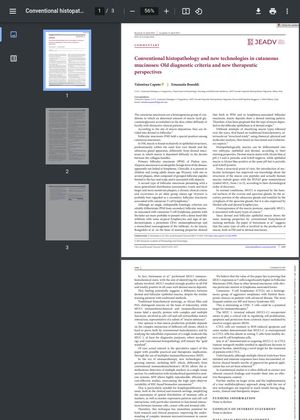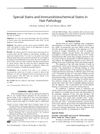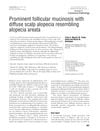Conventional Histopathology and New Technologies in Cutaneous Mucinoses: Old Diagnostic Criteria and New Therapeutic Perspectives

TLDR New technologies show potential for better understanding and treating skin conditions with abnormal mucin, but more research is needed for clinical use.
Cutaneous mucinoses are conditions where an abnormal amount of mucin accumulates in the skin. The study discusses two types: primary follicular mucinosis (PFM), a benign form often associated with alopecia, and a secondary form associated with cutaneous T-cell lymphoma. The paper highlights the role of MUC1, a protein overexpressed in many types of cancer, including these conditions. The study suggests that MUC1 expression is significantly higher in follicular mucinoses than in other dermal mucinoses, particularly in lymphoma-associated forms. This could make MUC1 a potential target for immunotherapies. However, while targeting MUC1 in CTCL tumor models resulted in a significant decrease in tumor burden, clinical trials have not yet achieved effective clinical benefit. The paper concludes that further studies on larger series and the use of new technologies are needed to have diagnostic, clinical, and therapeutic impact.






